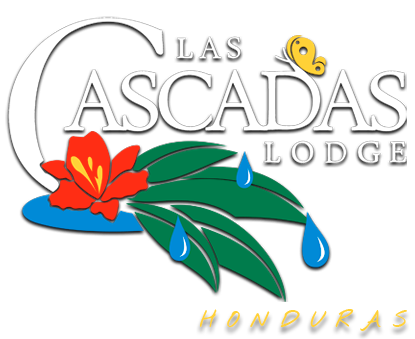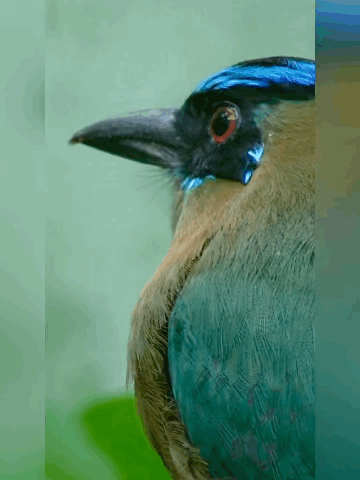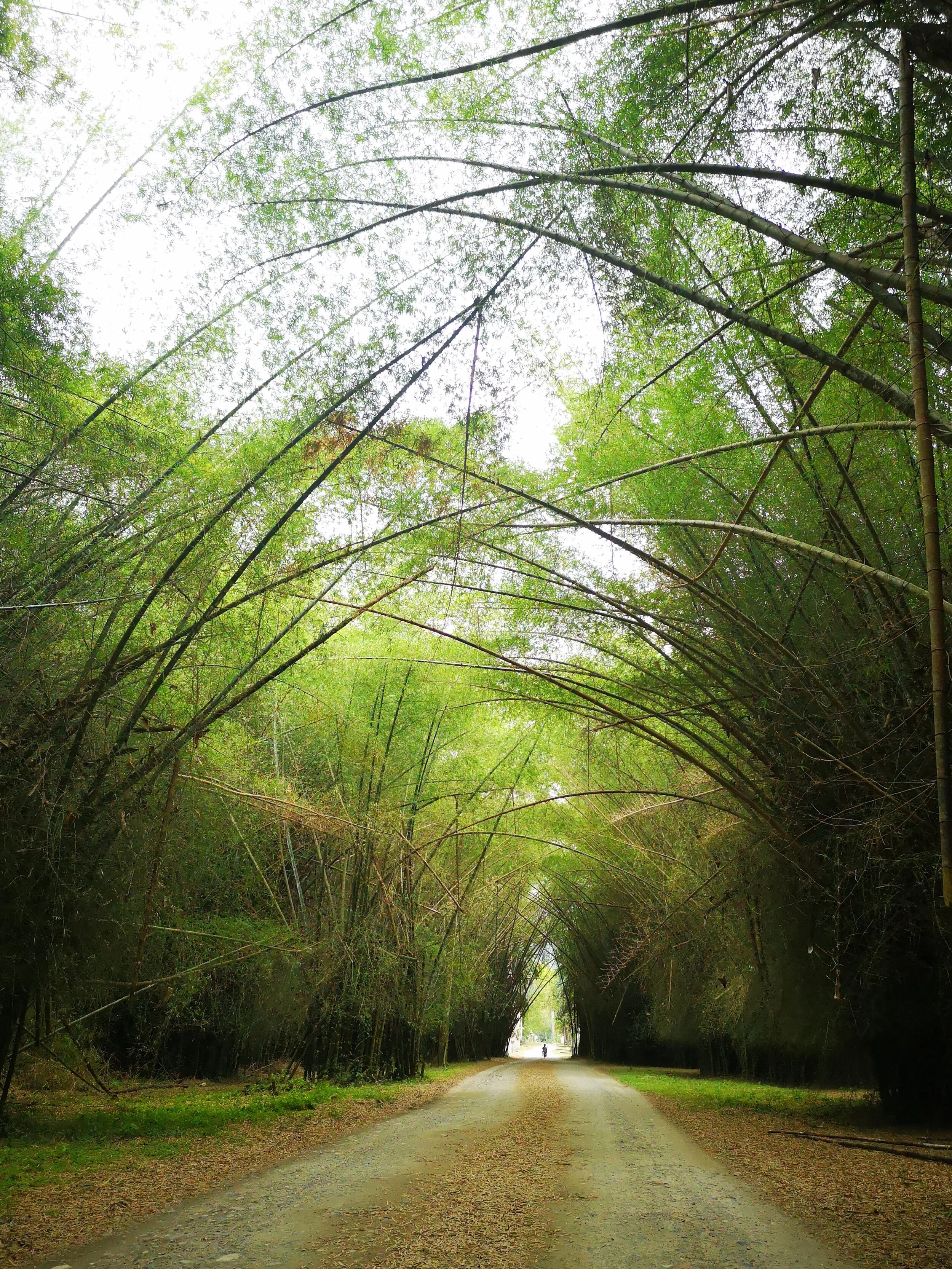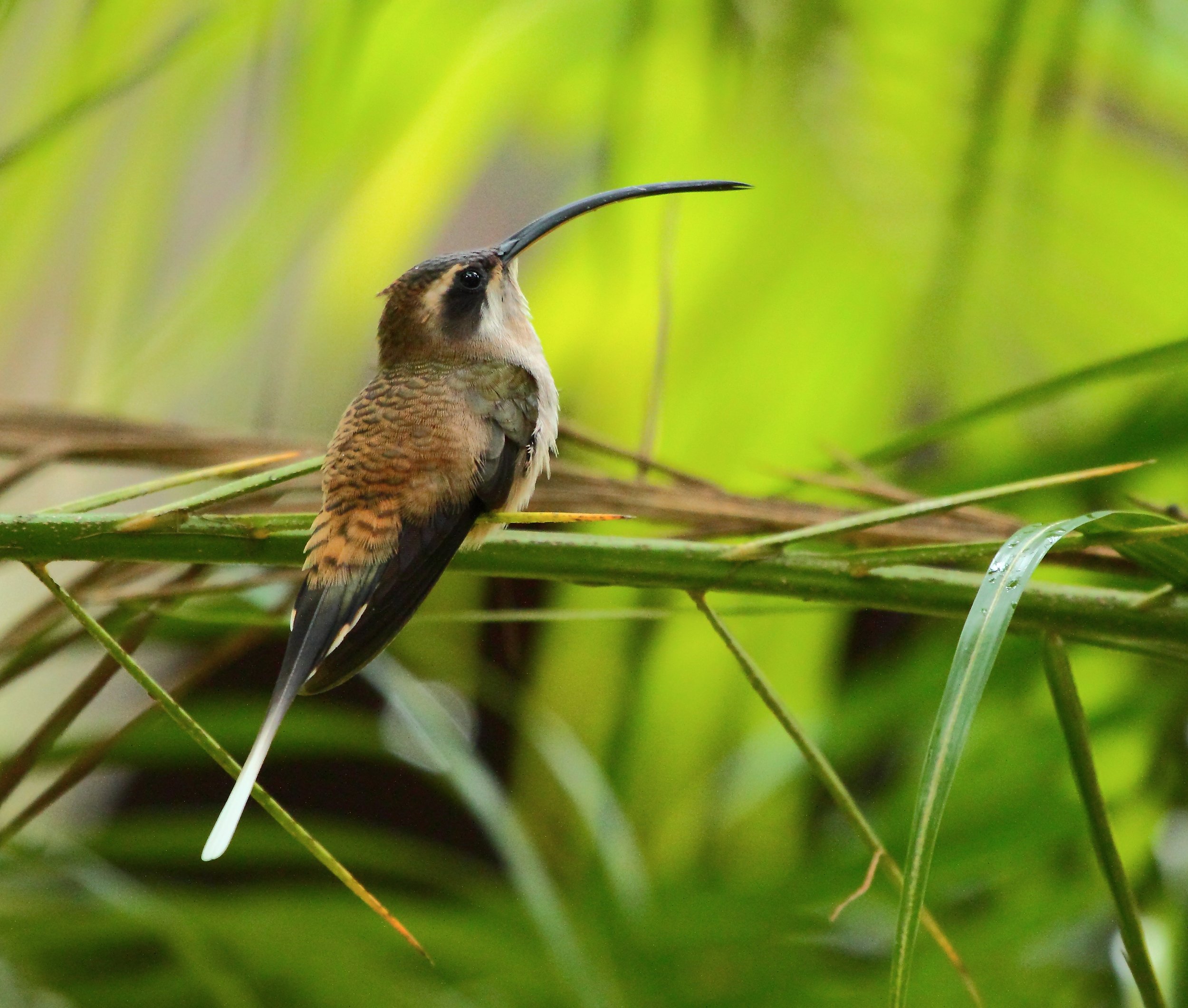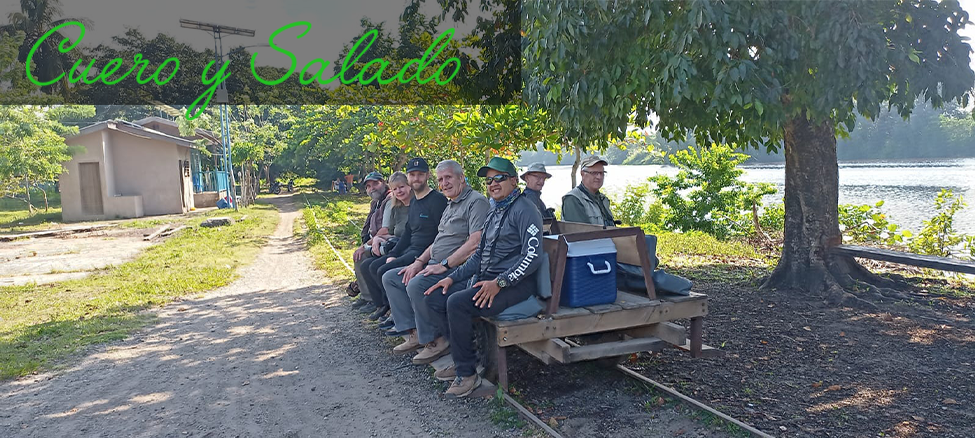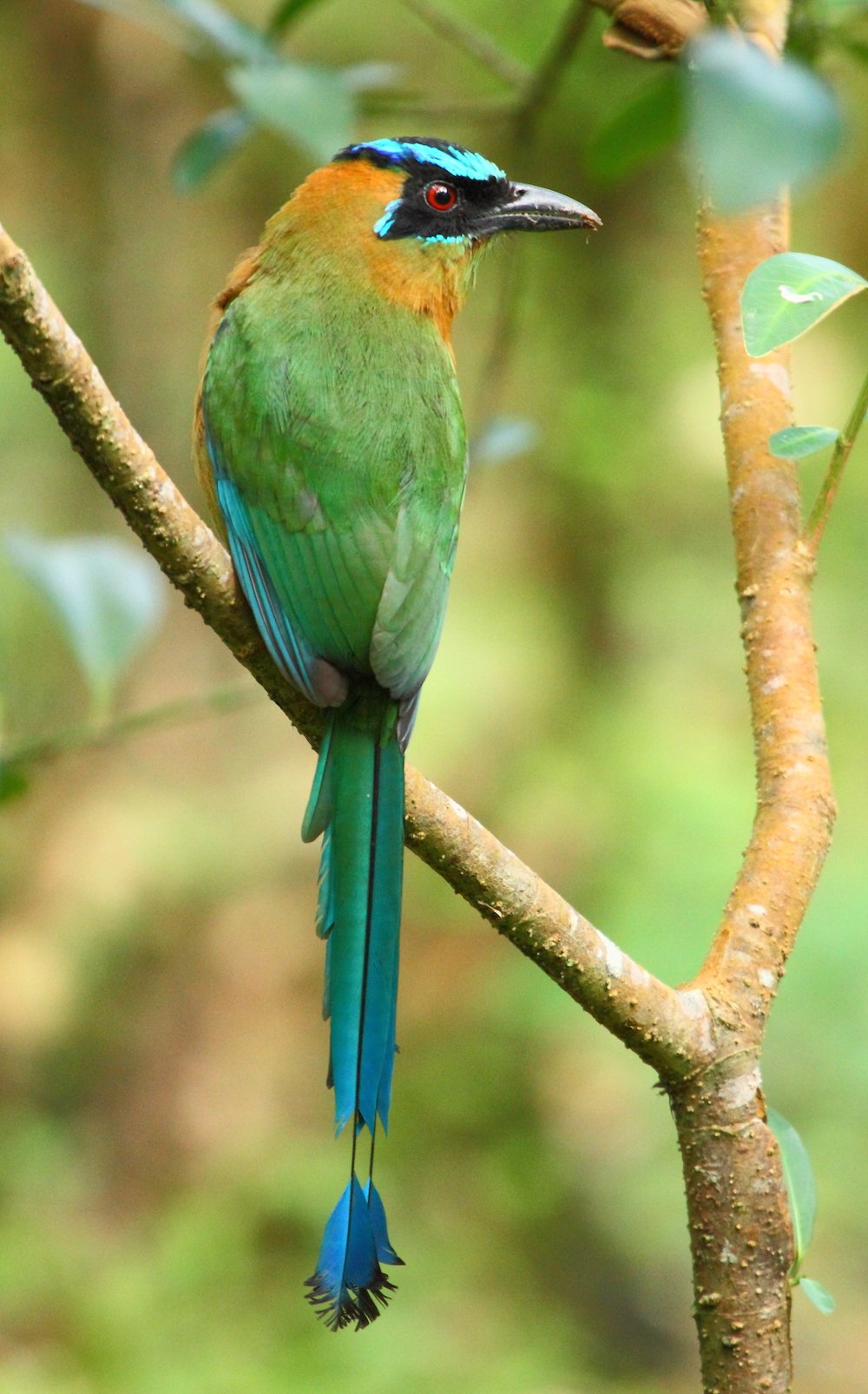“In Search Of A Motmot”
In search of a Motmot
“In Search Of A Motmot”
Sue Gratton - Author
As I trudged this past spring through a cold April rain with my pup, I was reminded of a tropical dream. Lush rainforest, warm sunshine, iridescent hummingbirds buzzing every which way among the heliconia, and the steady rush of a waterfall pouring into the swimming hole in the background. I am sitting in a camp chair, sipping coffee, and watching the banks of the waterfall for the resident motmots which nest within. This was one of those tiny, perfect moments during my trip to Las Cascadas Lodge in the Honduran jungle last November.
Motmots are “target” birds in this region of Honduras, and they became the theme of my trip. I was the only birder in a group of six friends travelling together, yet I was the only person in the group NOT to see a motmot – that is until the last day. But that is giving away the end of the story, so I will back up to the beginning.
Keel-billed Motmot
A Small Ecolodge
Las Cascadas Lodge is a small ecolodge owned by my friends, Deb and Jim. It is located within the Cangrejal River Valley just outside La Ceiba along the northern Caribbean coast of Honduras. The property is spectacular – 100 acres of tropical rainforest nestled between the Nombre de Dios and Pico Bonito mountain ranges. It lies along the river and borders on Pico Bonito National Park, identified as the most biodiverse area of Honduras. It boasts gardens, a small pool, a hot tub, trails winding through the forest and four waterfalls! (Las Cascadas means “the waterfalls” in Spanish.) The lodge itself is a cluster of small, thatched-roof buildings designed to blend into the forest.
Compared to Costa Rica, Honduras is relatively untapped for ecotourism. But it is a paradise for neotropical birds with 778 bird species on eBird. Just on the grounds of Las Cascadas Lodge, 220 bird species have been recorded. Some may have read that travel to Honduras is risky, but this is limited to a couple of isolated areas. La Ceiba and the Cangrejal River Valley are perfectly safe with the same precautions you would take in any third world country. And Las Cascadas Lodge organized everything from the moment we arrived at the airport to our departure. The local people we met were kind and proud to show off their country. I felt completely safe.
Las Cascadas Lodge in Honduras.
Birding in Lancetilla
We arrived in San Pedro Sula airport and rented a car to drive along the coast to La Ceiba and then up the river valley to Las Cascadas Lodge. This gave us an opportunity to visit Lancetilla Botanical Gardens along the way. It is one of the largest tropical botanical gardens in the world, with 4000 acres of plantings and virgin rainforest. It was first cultivated in 1925 by the Union James Adams 2 Fruit Company to test out various strains of banana that could be grown in the Honduran climate. It is now owned by the National University of Forest Sciences and still used for research. It is also one of the top birding destinations in Honduras, with a list of 347 species on eBird and features target birds such as the Golden-hooded Tanager (right), Red-capped Manakin and Red-legged Honeycreeper. Unfortunately, we were just passing through and tired from the trip, so I didn’t see any of these beauties. Next time, I will spend at least one full day birding Lancetilla.
Lancetilla Botanical Garden is a botanical garden and significant tourist attraction located on the coast of the Caribbean Sea, in the north of the Republic of Honduras, about 7 km southeast of the city of Tela.
Hummingbirds at the Lodge
Once we arrived at Las Cascadas Lodge, we were immediately surrounded by at least seven species of hummingbirds attracted by feeders in the front garden. My first task was to identify these exquisite, hovering jewels. Back in Toronto, I had accessed the Lodge’s eBird hotspot and flagged certain species in my Peterson guide. I spotted the largest species – and my favourite – the vibrant Violet Sabrewing (at left). Slightly less colourful was the most common species, the Rufous-tailed Hummingbird. White-necked Jacobins and Crowned Woodnymphs were also common. Every so often, I would delight in spotting three other species: Purple-crowned Fairies, Long-billed Hermits and Stripe-throated Hermits. All these lifers just on my travel day! Deb and Jim are developing the lodge as a birding destination. They have planted hundreds of trees and bushes and built platform feeders to attract different bird species. Even without the national park up the road, it is almost one-stop-shopping for birding the area. This was ideal for me because I could go birding by myself anytime without leaving the grounds.
Long-billed Hermit
Nature at Las Cascadas Lodge
There are three different ecosystems on site. First is the surrounding gardens and lower elevation jungle. Part of this area used to be a cacao plantation and orange orchard, but the jungle has been allowed to grow for many years. This is the area for Keel-billed Toucans, trogons, parakeets and so much more. The second ecosystem is along the Cangrejal River. The river attracts kingfishers, egrets and a target bird of the area – the Sunbittern. The third ecosystem is high canopy primary rain forest that extends up to 173 meters above sea level. It attracts interior forest species like the motmots.
Sunbittern
Regular Sightings
Some birds live just outside the lodge and I encountered them more or less in the same location each day. These included a Northern Waterthrush, a Summer Tanager, a male Hooded Warbler and a Kentucky Warbler. By the end of the week, birds that would send me over the moon in South River became almost unremarkable. A family of Ivory-billed Woodcreepers also visited the front garden each morning. Woodcreepers are like a cross between a woodpecker and a treecreeper. They are reminiscent of our Brown Creepers but double the size with a more prominent curved bill.
Two trails extend up into the primary rainforest and lead to waterfalls with swimming holes. The more sedate Orchard Trail became my regular morning walk. This trail starts in the front garden and meanders through the rainforest in a 30-minute loop. Halfway along the trail is a clearing with a lookout over the river valley and the canopy surrounding it. There is one huge Guanacaste tree in the foreground. It has been colonized by mistletoe and the birds love it. I was able to sit and watch a parade of exotic species traveling through. At any moment, there might be a group of Olive-throated Parakeets, a Masked Tityra, a Black-cheeked Woodpecker and a Squirrel Cuckoo competing for my attention.
Birding Guides
Deb and Jim have developed relationships with several birding experts. My guide, Kelvin Bodden, took me out several times through the week, teaching me what birds to expect in the area and helping me identify the more timid and subtle species like flycatchers and euphonias. Once we entered the rainforest, Kelvin would stop periodically and play the call of the Ferruginous Pygmy Owl. Just as some of our northern birds will gather in response to the call of a Barred Owl, Honduran birds are attracted to the Pygmy Owl call. This tiny owl (about 6 inches) is common in the area and hunts during the day. I never did see a Pygmy Owl but heard one on several occasions.
I learned a lot from Kelvin, but the most rewarding experience was being alone in the jungle and discovering spectacular birds by myself. Many tropical birds have such unique plumage that I was able to identify them confidently with the help of my Peterson guide. For example, one morning I discovered a Green Honeycreeper, unmistakable with its black hood and turquoise plumage. A few minutes later, a Black- headed Trogon sat just above me on a branch. I also saw a Gartered Trogon and a Slaty-tailed Trogon but didn’t get such good views of them.
Ferruginous Pygmy Owl
The Lovely Cotinga Sighting
One of these solo walks became a highlight of my trip. I watched two vibrant blue birds with purple breasts fly past, accompanied by a drab brown speckled bird. I turned the corner as they landed on the mistletoe tree. I immediately suspected these might be Lovely Cotingas (at right), a target bird of the region. I was able to get a poor picture that was, nonetheless, good enough to positively identify them. On returning to the Lodge, I learned that this was the first time the Lovely Cotingas had been spotted on the grounds. Everyone was excited and the manager sent out a social media blast reporting the find. Thankfully I was able to get a picture – otherwise I am pretty sure no one would have believed me!
Lovely Cotinga
Incredible Woven Nests
One of my favorite birds of the trip was the Montezuma Oropendola (left), named after the Aztec Emperor. The word oropendola means “gold pendulum” which refers to the bird's bright yellow tail and the male’s habit of bobbing forward during its courtship display. The male will sometimes bob so deeply that it does a complete 360 degree turn on its branch! Montezuma Oropendolas are one of the most sexually dimorphic birds in the world. Males are 20 inches and females 16 inches long, but males are twice as heavy as females. These birds live in colonies in which the females build hanging nests all in the same tree and the males fight until one is established as the alpha male. Once established as such, he then mates with most of the females. I saw these birds most days and when I didn’t see them, I heard them. They have a crazy call described as liquid gurgling out of a bottle. It is often accompanied by the male’s pendulum trick.
Oropendola Nests
A Trip To Cuero Y Salado
Another highlight was a day trip we took to Cuero y Salado Wildlife Refuge. This refuge, not accessible by car, is up the coast and consists of an extensive network of mangroves. To get there, we boarded a so-called “train”, looking more like a cart, for a thirty-minute ride through cattle farms and coconut plantations. As eight of us piled on top of a cart with our bags, a young man driving a motorized bike pulled up beside us. His friends gave us a mighty push, launching us along the rails as the young man on his bike took off alongside us, with one foot pressed against the side of the cart to maintain our momentum. Without any handholds, we could only hope we wouldn’t bounce off onto the side of the tracks!
Mangrove Sightings
But the journey didn’t detract from the bird life appearing alongside us. Kelvin identified Limpkins, herons, egrets and a group of ibises wading in flooded fields. Once we reached the boat, we motored gently through the mangroves as Kelvin and the boat driver scanned the shoreline. Again and again, we stopped to enjoy the birds, along with the occasional crocodile and Howler Monkey. We saw 65 bird species in only a few hours. My favourite find was four Boat- billed Herons (right) with their big eyes and outlandish broad, flattened bills. I had noticed them in my Peterson guide, but it was hard to believe these cartoonish characters were real and in front of me. I also loved the Bare- throated Tiger Heron. The vermiculated patterning on its neck is very tiger-like.
Transportation Train
Back to the Motmot
Finally, back to the Motmots. These remarkable birds, with their long extravagant tails, make nests by burrowing into steep earthen banks. They dig a new burrow each season, apparently digging up to five metres into the bank. There is a lack of research on this species, partly because of the difficulty accessing them. By the second last day of our trip, everyone had seen one or two Motmots - that is, everyone except me! This had become a running joke. The rest of the group had seen a Keel-billed Motmot in town, sitting in plain view on a telephone wire. I had chosen not to go to town because I wanted to spend more time birding. And, of course, I was the one to miss this great Motmot. Hearing this, our cook Olvin was determined to remedy the situation.
Lessons Motmot
A Storybook Ending!
Early on my last morning, Olvin wielded his machete and led me into Pico Bonito Park to an embankment where motmots are known to nest. For a while, it seemed that we would see every bird BUT a motmot. A flock of Keel-billed Toucans (one at right) flew overhead giving us a great view of their silhouette – all beaks with skinny bodies trailing behind. A drab bird, the Northern Schiffornis, landed right beside me. This was a coup because despite its distinct song, it is not easy to see. And then, just as we were about to give up – because after all Olvin did have to prepare breakfast! – a brilliant blue bird flew right over my head. It was unmistakable with its long tail trailing behind it, and it perched just long enough for me to be certain that it was indeed a Lesson’s Motmot. A storybook ending to a magical trip!
Return to Honduras
In all, I saw 108 species and 77 lifers. Now that I am oriented to the area, I can’t wait to go back and focus on finding some of the rarer target birds, as well as a few more Motmots.
The Author
